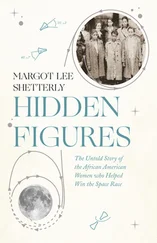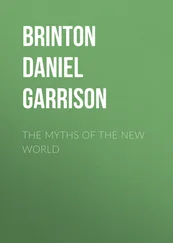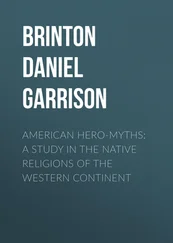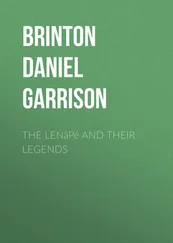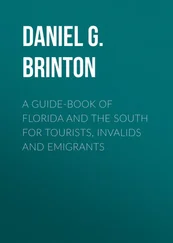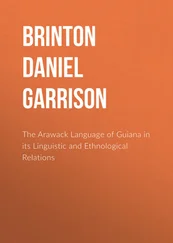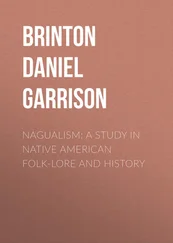Daniel Brinton - The American Race
Здесь есть возможность читать онлайн «Daniel Brinton - The American Race» — ознакомительный отрывок электронной книги совершенно бесплатно, а после прочтения отрывка купить полную версию. В некоторых случаях можно слушать аудио, скачать через торрент в формате fb2 и присутствует краткое содержание. Жанр: foreign_antique, История, История, foreign_edu, на английском языке. Описание произведения, (предисловие) а так же отзывы посетителей доступны на портале библиотеки ЛибКат.
- Название:The American Race
- Автор:
- Жанр:
- Год:неизвестен
- ISBN:нет данных
- Рейтинг книги:4 / 5. Голосов: 1
-
Избранное:Добавить в избранное
- Отзывы:
-
Ваша оценка:
- 80
- 1
- 2
- 3
- 4
- 5
The American Race: краткое содержание, описание и аннотация
Предлагаем к чтению аннотацию, описание, краткое содержание или предисловие (зависит от того, что написал сам автор книги «The American Race»). Если вы не нашли необходимую информацию о книге — напишите в комментариях, мы постараемся отыскать её.
The American Race — читать онлайн ознакомительный отрывок
Ниже представлен текст книги, разбитый по страницам. Система сохранения места последней прочитанной страницы, позволяет с удобством читать онлайн бесплатно книгу «The American Race», без необходимости каждый раз заново искать на чём Вы остановились. Поставьте закладку, и сможете в любой момент перейти на страницу, на которой закончили чтение.
Интервал:
Закладка:
While the Mohegans built large communal houses, the Lenâpés and most of the eastern Algonkins constructed small wattled huts with rounded tops, thatched with the leaves of the Indian corn or with sweet flags. These were built in groups and surrounded with palisades of stakes driven into the ground. In summer, light brush tents took the place of these. Agriculture was by no means neglected. The early explorers frequently refer to large fields of maize, squash and tobacco under cultivation by the natives. The manufacture of pottery was widespread, although it was heavy and coarse. Mats woven of bark and rushes, deer skins dressed with skill, feather garments, and utensils of wood and stone, are mentioned by the early voyagers. Copper was dug from veins in New Jersey and elsewhere and hammered into ornaments, arrowheads, knives and chisels. It was, however, treated as a stone, and the process of smelting it was unknown. The arrow and spear heads were preferably of quartz, jasper and chert, while the stone axes were of diorite, hard sandstone, and similar tough and close-grained material. 91 91 The best work on this subject is Dr. C. C. Abbott’s Primitive Industry (Salem, 1881).
An extensive commerce in these and similar articles was carried on with very distant points. The red pipe-stone was brought to the Atlantic coast from the Coteau des Prairies, and even the black slate highly ornamented pipes of the Haidah on Vancouver Island have been exhumed from graves of Lenâpé Indians.
Nowhere else north of Mexico was the system of picture writing developed so far as among the Algonkins, especially by the Lenâpés and the Chipeways. It had passed from the representative to the symbolic stage, and was extensively employed to preserve the national history and the rites of the secret societies. The figures were scratched or painted on pieces of bark or slabs of wood, and as the color of the paint was red, these were sometimes called “red sticks.” One such, the curious Walum Olum , or “Red Score,” of the Lenâpés, containing the traditional history of the tribe, I was fortunate enough to rescue from oblivion, and have published it with a translation. 92 92 The Lenâpé and their Legends; with the Complete Text and Symbols of the Walum Olum, and an Inquiry into its Authenticity. By Daniel G. Brinton, Philadelphia, 1885 (Vol. V. of Brinton’s Library of Aboriginal American Literature ).
The contents of others relating to the history of the Chipeways (Ojibways) have also been partly preserved.
The religion of all the Algonkin tribes presented a distinct similarity. It was based on the worship of Light, especially in its concrete manifestations, as the sun and fire; of the Four Winds, as typical of the cardinal points, and as the rain bringers; and of the Totemic Animal. Their myths were numerous, the central figure being the national hero-god Manibozho or Michabo, often identified with the rabbit, apparently from a similarity in the words. He was the beneficent sage who taught them laws and arts, who gave them the maize and tobacco, and who on his departure promised to return and inaugurate the Golden Age. In other myths he is spoken of as the creator of the visible world and the first father of the race. Along with the rites in his worship were others directed to the Spirits of the Winds, who bring about the change of seasons, and to local divinities.
The dead as a rule were buried, each gens having its own cemetery. Some tribes preserved the bones with scrupulous care, while in Virginia the bodies of persons of importance were dried and deposited in houses set apart for the purpose.
The tribe that wandered the furthest from the primitive home of the stock were the Blackfeet, or Sisika, which word has this signification. It is derived from their earlier habitat in the valley of the Red river of the north, where the soil was dark and blackened their moccasins. Their bands include the Blood or Kenai and the Piegan Indians. Half a century ago they were at the head of a confederacy which embraced these and also the Sarcee (Tinné) and the Atsina (Caddo) nations, and numbered about thirty thousand souls. They have an interesting mythology and an unusual knowledge of the constellations. 93 93 See Horatio Hale, “ Report on the Blackfeet ,” in Proc. of the Brit. Assoc. for the Adv. of Science , 1885.
The Lenâpés were an interesting tribe who occupied the valley of the Delaware river and the area of the present State of New Jersey. For some not very clear reason they were looked upon by the other members of the stock as of the most direct lineage, and were referred to as “grandfather.” Their dialect, which has been preserved by the Moravian Missionaries, is harmonious in sound, but has varied markedly from the purity of the Cree. 94 94 See Lenâpé-English Dictionary: From an anonymous MS. in the Archives of the Moravian Church at Bethlehem, Pa. Edited with additions by Daniel G. Brinton, M. D., and Rev. Albert Seqaqkind Anthony. Published by the Historical Society of Pennsylvania. Philadelphia, 1888. Quarto, pp. 236.
It has lost, for instance, the peculiar vowel change which throws the verb from the definite to the indefinite form. The mythology of the Lenâpés, which has been preserved in fragments, presents the outlines common to the stock.
ALGONKIN LINGUISTIC STOCK
Abnakis , Nova Scotia and S. bank of St. Lawrence.
Arapahoes , head waters of Kansas river.
Blackfeet , head waters of Missouri river.
Cheyennes , upper waters of Arkansas river.
Chipeways , shores of Lake Superior.
Crees , southern shores of Hudson Bay.
Delawares , see Lenâpés .
Illinois , on the Illinois river.
Kaskaskias , on Mississippi, below Illinois river.
Kikapoos , on upper Illinois river.
Lenâpés , on the Delaware river.
Meliseets , in Nova Scotia and New Brunswick.
Miamis , between Miami and Wabash rivers.
Micmacs , in Nova Scotia.
Menomonees , near Green Bay.
Mohegans , on lower Hudson river.
Manhattans , about New York Bay.
Nanticokes , on Chesapeake Bay.
Ottawas , on the Ottawa river and S. of L. Huron.
Pampticokes , near Cape Hatteras.
Passamaquoddies , on Schoodic river.
Piankishaws , on middle Ohio river.
Piegans , see Blackfeet .
Pottawattomies , S. of Lake Michigan.
Sauteux , see Crees .
Sacs and Foxes , on Sac river.
Secoffies , in Labrador. S
hawnees , on Tennessee river.
Weas , near the Piankishaws.
5. THE IROQUOIS
When the French first explored the St. Lawrence River, they found both its banks, in the vicinity where the cities of Montreal and Quebec now stand, peopled by the Iroquois . This tribe also occupied all the area of New York state (except the valley of the lower Hudson), where it was known as the Five Nations. West of these were the Hurons and Neutral Nation in Canada, and the Eries south of Lake Erie, while to the south of the Five Nations, in the valley of the Susquehanna and pushing their outposts along the western shore of Chesapeake Bay to the Potomac, were the Andastes and Conestogas, called also Susquehannocks. Still further south, about the head-waters of the Roanoke River, dwelt the Tuscaroras, who afterwards returned north and formed the sixth nation in the league. West of the Apalachians, on the upper waters of the Tennessee River, lived the Cherokees who, by their tradition, had moved down from the upper Ohio, and who, if they were not a branch of the same family, were affiliated to it by many ancient ties of blood and language. The latest investigations of the Bureau of Ethnology result in favor of considering them a branch, though a distant one, of the Iroquois line.
Читать дальшеИнтервал:
Закладка:
Похожие книги на «The American Race»
Представляем Вашему вниманию похожие книги на «The American Race» списком для выбора. Мы отобрали схожую по названию и смыслу литературу в надежде предоставить читателям больше вариантов отыскать новые, интересные, ещё непрочитанные произведения.
Обсуждение, отзывы о книге «The American Race» и просто собственные мнения читателей. Оставьте ваши комментарии, напишите, что Вы думаете о произведении, его смысле или главных героях. Укажите что конкретно понравилось, а что нет, и почему Вы так считаете.

